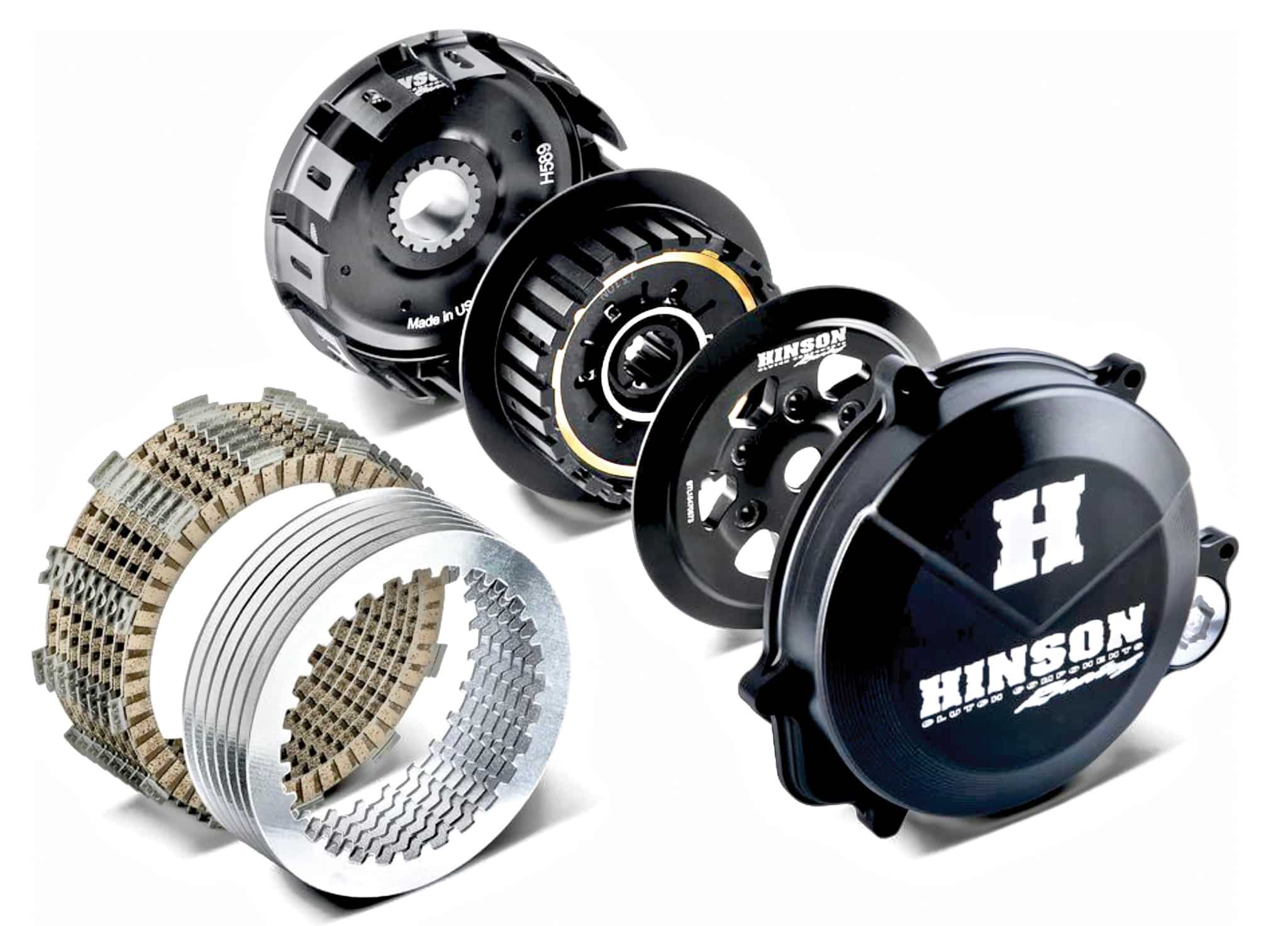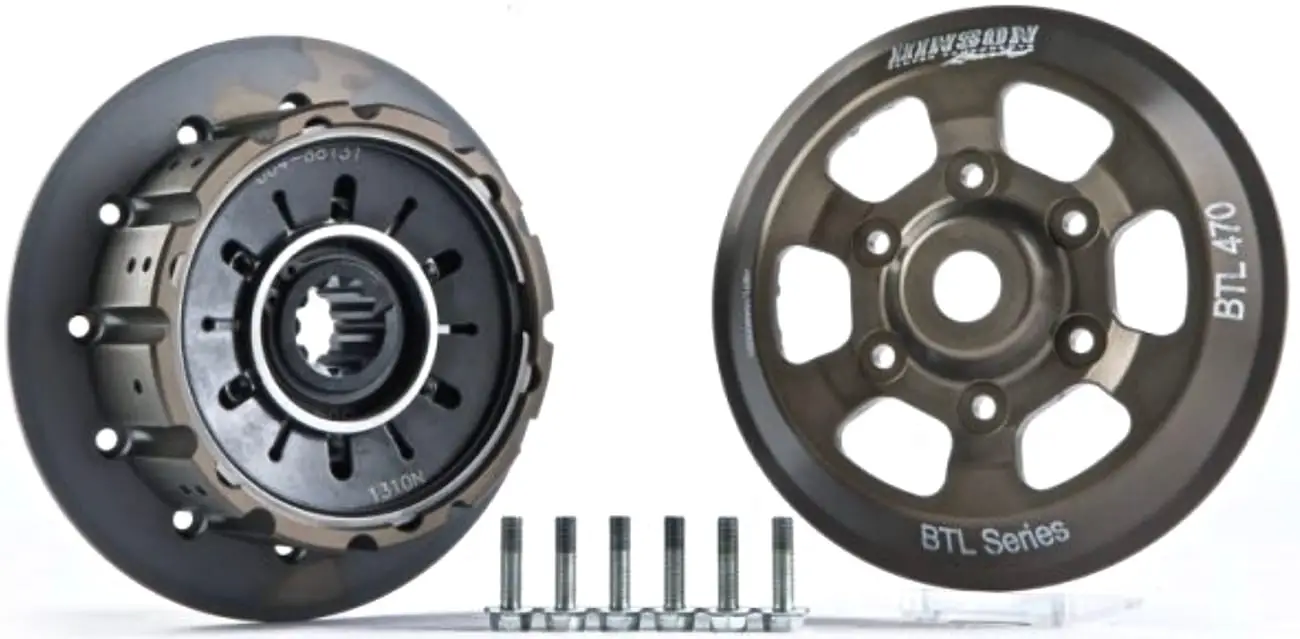TEN THINGS ABOUT SLIPPER CLUTCHES
(1) Concept. A slipper clutch does just what the name implies—it slips. Whenever the engine decelerates, the slipper clutch acts just as though the rider pulled the clutch lever in. Don’t confuse it with an automatic clutch, though; you still have to pull the clutch in to start, shift or stop. It just slips when you back off the throttle. Once the engine’s dynamic forces come back into balance, the clutch returns to normal.
(2) Purpose. A slipper clutch is more of a handling device than an actual engine aid. It disengages the clutch under significant deceleration. This frees up the rear suspension by lessening chain torque, which can be a major benefit in braking bumps.
(3) How it works. A slipper clutch has two pressure plates. First, the one you activate with the clutch lever, and second, one inside the clutch basket that is activated by centrifugal force. This second pressure plate is the slipper. It is spring-loaded and rides on ball bearings (very similar to a power-valve mechanism). When you chop the throttle, the crank slows down quickly, but your rear wheel continues rolling. The difference in momentum between the heavy clutch basket and the lighter slipper pressure plate causes them to rotate at different speeds. The speed differential makes the slipper’s pressure plate ride up on the ball bearings, which in turn moves the pressure plate away from the clutch basket, effectively pulling the clutch in (albeit from behind).
(4) Customization. The typical slipper clutch’s actuation point is controlled by a large Belleville washer spring. The Hinson BTL (Back-Torque Limiter) slipper clutch comes with the lightest spring in it. The light spring allows the clutch to slip more easily. With stiffer springs, the slipping won’t begin until the bike decelerates more.
(5) Decompression braking. When you chop the throttle on a four-stroke, the decompression of the engine slows forward momentum dramatically—on some bikes more than others. A slipper clutch lessens decompression braking, which makes a four-stroke roll more like a two-stroke and feel lighter on the entrance to turns.
(6) Wheel hop. Slipper clutches are found more often in flat track, Supermoto and road racing. Why? Because when you chop the throttle on the pavement (with 100-percent traction) and try to use the rear brake, the rear wheel starts to hop. Slipper clutches eliminate wheel hop on pavement.
(7) Packing. The combination of decompression braking and braking bumps at the end of a straight creates a condition known as “shock lock” or “packing.” The coaction of rapid decompression braking, rear-brake lockup and chain torque makes four-strokes bounce through braking bumps. A slipper clutch eliminates both chain torque and decompression braking.
(8) Jumping. It’s no secret that a four-stroke has to have the engine-making power going up the face of a jump, or the bike’s chassis will want to rotate forward (endo). A slipper clutch stops the rotation by stopping the deceleration of the rear wheel on jump faces in off-throttle situations, allowing it to roll more freely into the air like a two-stroke.
(9) Traction. As a bonus, slipper-clutch-equipped bikes seem to accelerate with more traction in roll-on situations than bikes with a conventional clutch. They also have less snap off the starting line. Because the slipper clutch has more moving parts, it’s heavier, and that smooths out the power down low.
(10) Application. Slipper clutches are becoming less popular in motocross now that the OEMs are designing stock engines with less decompression braking, and ECU tuners are figuring out how to adjust engine braking in the aftermarket with mapping; however, for top pros like Ken Roczen, the Hinson BTL slipper clutch is an essential puzzle piece.






Comments are closed.